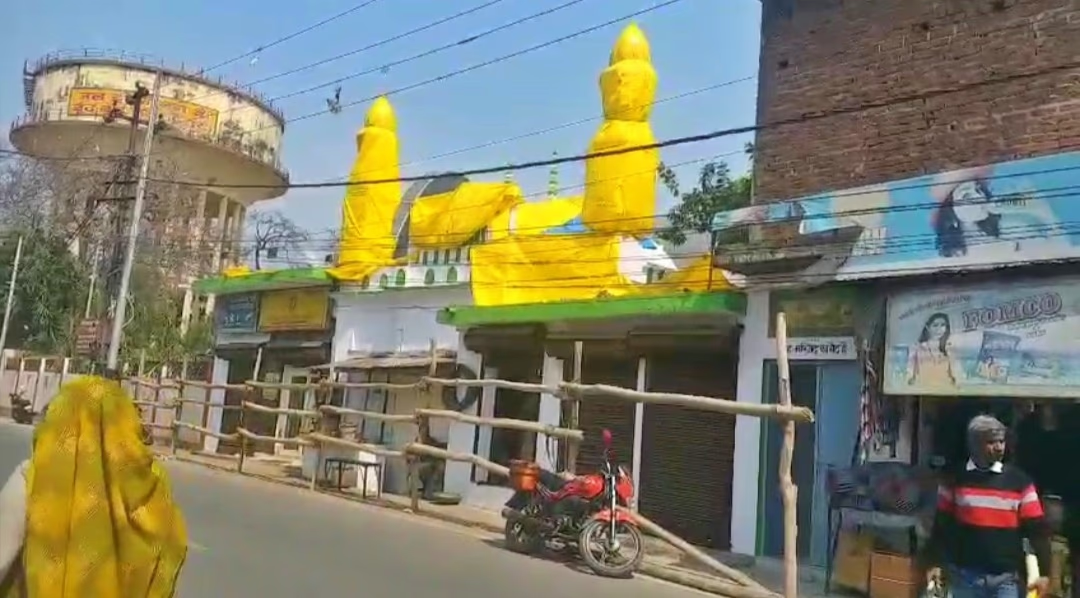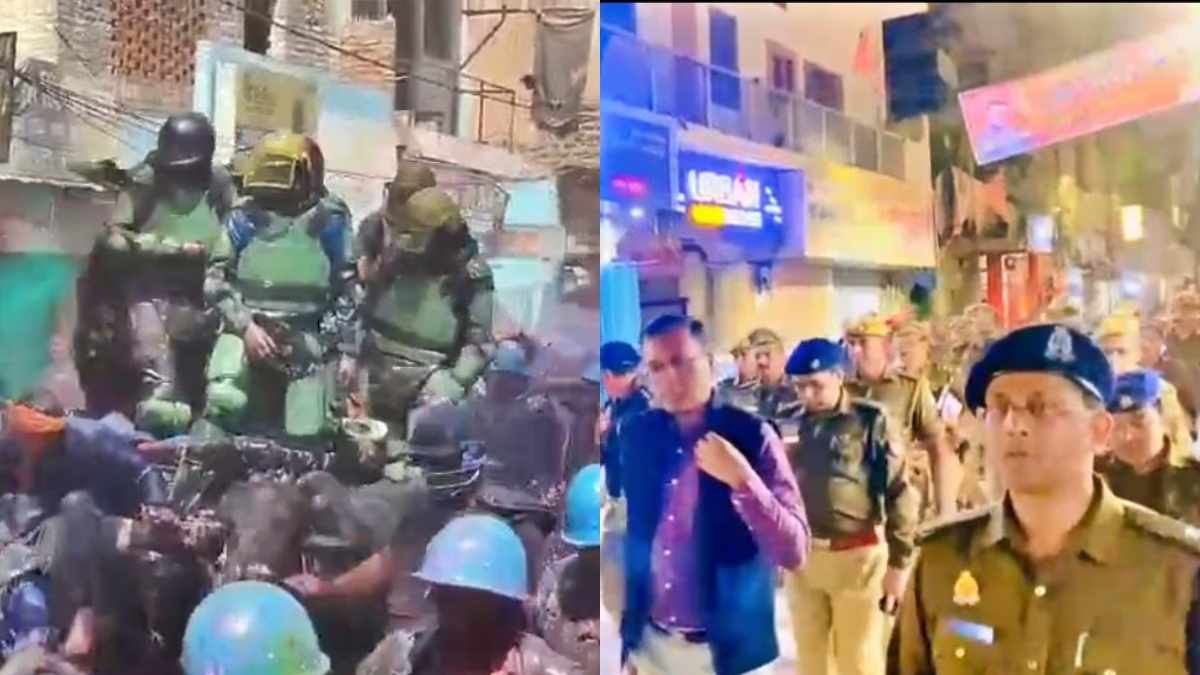In Uttar Pradesh's Shahjahanpur district, 'Juta Maar Holi' is celebrated. This unique form of Holi has been part of the tradition for over 300 years, prompting local authorities to remain alert. All mosques along the Holi procession routes are covered with tarps to prevent any unwanted incidents. A substantial police force is deployed throughout the area.
On March 14, the grand 'Lat Sahab' procession takes place in Shahjahanpur. During this event, a person is dressed as 'Lat Sahab' and paraded on a buffalo cart, as people shower them with colors, footwear, and more. Consequently, the authorities have covered mosques for safety reasons. This is not a first-time occurrence.

Source: aajtak
To prevent colors and dyes from entering mosques and to avert communal tensions, 32 mosques along the 'Bade Lat Sahab' and 'Chhote Lat Sahab' procession routes are mutually consented to be covered. Security measures include the deployment of police officers outside these mosques, drone surveillance of rooftops along the procession route, and active status of all CCTV cameras.
In Shahjahanpur, 24 processions related to Holi take place, with eight of them being 'Lat Sahab' processions within the city. Two principal processions march through the heart of the city. The 'Bade Lat Sahab' procession follows a seven-and-a-half-kilometer route, while the 'Chhote Lat Sahab' covers two and a half kilometers.

Source: aajtak
During the parade, an individual is appointed as 'Lat Sahab', seated on a buffalo cart, and paraded through the city, bearing blows of shoes and brooms. Enroute, the public hurls shoes at the 'Lat Sahab'. The procession is lively and vibrant, drawing large crowds. Incidents of disputes have occurred when colors were thrown at mosques, prompting the decision to preemptively cover more than 32 mosques along the route each year before Holi.
Why This Unique Procession Takes Place
This procession is a symbolic protest against the atrocities committed by the British during the colonial rule. To express their outrage, citizens of Shahjahanpur appoint someone as 'Lat Sahab', seating them on a buffalo cart. 'Lat Sahab' symbolizes the British, thus receiving symbolic beatings with footwear and brooms.
Historian Dr. Vikas Khurana explains that the 'Lat Sahab' procession is nearly three centuries old. During the era of Awadh rule, these activities were joined by the Nawabs. Written evidence is found in 'Tareekhe Shahjahnpuri', mentioning Nawab Abdullah Khan's participation in Holi and the city-wide processions.

Source: aajtak
The term 'Lat Sahab' procession emerged when the British mockingly appointed someone as 'Lat Sahab' during Holi, prompting shoe pelting by the population. It was a silent protest against oppressive British policies. In 1857, during the revolution, the British perceived this procession as a threat to communal harmony. However, in 1988, then district officer Kapil Dev made efforts to restore its traditional form. For years, the 'Lat Sahab' procession would take off from Baba Chausi Nath, pass through Baba Vishwanath Temple, and conclude at Pati Gali, after circling through the entire city.




